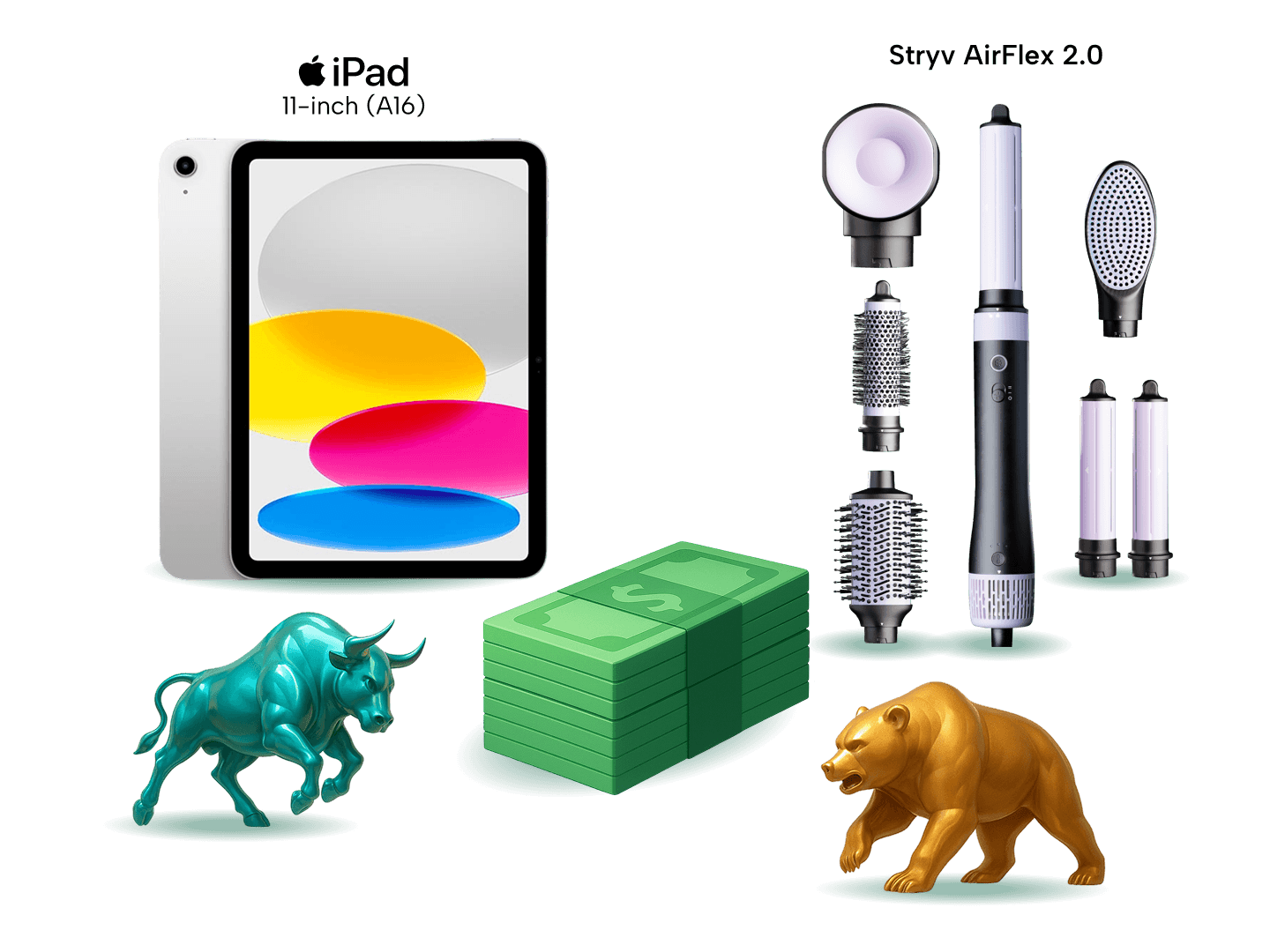5 steps to create a budget that works for you
Updated: 11 Dec 2025
Allocate your income wisely across essential expenses, discretionary spending, savings, and debt repayment.
Managing your money wisely starts with a solid budget. Whether you're saving for a home, planning for retirement, or just trying to keep up with daily expenses, a structured budget helps you stay on track. In a high-cost city like Singapore, understanding how to budget your money effectively is crucial for financial stability and long-term security. This guide will walk you through five simple steps to create a budget that works for your lifestyle.
How to create a budget
A good budget ensures you’re covering essentials, saving for the future, and still having enough for life’s little joys. Follow these five steps to establish a budget that works for you.
Step 1: Calculate your take-home pay
Before you set up a budget, you need to know exactly how much money you have to work with. In Singapore, your take-home pay (net income) isn’t just your salary—it’s what’s left after CPF contributions, taxes, and other deductions.
Here’s how to calculate it based on your income type:
-
Salaried employees: Your employer deducts 20% of your salary for CPF (Central Provident Fund) and contributes an additional 17%. You’ll also need to factor in progressive income tax, which increases as your earnings grow.
-
Freelancers and gig workers: Since CPF contributions aren’t automatic, you’ll need to set aside Medisave contributions yourself. Deduct your business expenses and estimated taxes to determine your actual take-home income.
Knowing your true net income gives you a clear picture of how much you can allocate to daily expenses, savings, and investments.
Step 2: Pick a budgeting strategy that suits you
Budgeting strategies vary based on personal habits and financial goals. Popular methods include:
-
50/30/20 Rule: Allocates 50% of income to needs, 30% to wants, and 20% to savings and debt repayment:
-
50% for needs – rent, bills, groceries, transport
-
30% for wants – dining out, shopping, entertainment
-
20% for savings and debt repayment
-
-
Zero-Based Budgeting: Assigns every dollar a specific purpose and allocates all of your income to specific categories like rent, food, savings, and investments, ensuring that by the end of the month, your income minus expenses equals zero.
-
Envelope System: Ideal if you tend to overspend on certain expenses. You set aside cash (or use separate bank accounts) for different spending categories—once the allocated amount runs out, you stop spending in that category.
Choose a method that fits your lifestyle, and don’t be afraid to tweak it. If your income varies, focus on covering essentials first and adjust the rest as needed. The best budget is one that’s realistic and sustainable.
SingSaver STK Exclusive Offer
Compare top brokerages and enjoy exclusive rewards, including cash, upsized Apple + voucher bundles and more when you sign up through SingSaver. Plus, get bonus stackable rewards from selected brokerages. Valid till 1 January 2026. T&Cs apply.
Plan for what truly matters
Want to take charge of your financial future? Learn how to set clear, achievable goals that align with your life priorities.
Step 3: Keep track of your spending
Sticking to your budget starts with understanding where your money goes. Use budgeting apps like Seedly and MoneyOwl or bank tools such as DBS NAV Planner to categorise expenses and spot spending patterns. A simple spreadsheet can also do the trick if you prefer a manual approach.
Make it a habit to review your spending at least once a week. If you notice overspending in certain areas — like dining out or online shopping — adjust your budget accordingly. Redirecting those funds toward savings or debt repayment can help you stay on track with your financial goals.
Step 4: Set up automatic savings
Make saving effortless by setting up a GIRO transfer from your salary into a high-interest savings account like OCBC 360, UOB One or DBS Multiplier. Prioritise building your emergency fund, and if you're investing, automate contributions to platforms like Syfe or StashAway to grow your wealth passively.
Step 5: Review and adjust your budget regularly
Life changes — so should your budget. Whether you're getting married, buying a home, having a child, or switching jobs, your financial priorities will shift. Adjust your savings, spending, and investment allocations accordingly.
Avoid lifestyle inflation by resisting the urge to increase expenses just because your income rises. Instead, direct extra funds into savings or investments to build long-term financial security. Review your budget every three to six months and refine it as needed to ensure it aligns with your current financial situation.
Set clear priorities for your budget
-
Debt consolidation to combine multiple loans into one with a lower interest rate.
-
Repayment plans to negotiate lower monthly payments.
-
Seeking professional advice if your total unsecured debt equals 50% or more of your gross income.
-
Robo-advisors (e.g., StashAway, Syfe) to automate your investments.
-
Exchange-traded funds (ETFs) or index funds for long-term growth.
-
Buying a home: Set aside funds for a down payment to reduce future loan amounts.
-
Investing in passive income: Consider stocks, ETFs, or real estate for long-term wealth growth.
-
Saving for lifestyle goals: Whether it’s a dream vacation, further education, or starting a business, having dedicated savings for personal goals helps you stay on track without dipping into emergency funds.
Before tackling debt or investments, set aside some cash for unexpected expenses. Financial experts often suggest having several months’ worth of essential expenses saved. However, starting with at least $500 to $1,000 can provide a safety net for minor emergencies, such as urgent repairs or medical costs.
If saving this amount upfront isn’t feasible, set aside a small portion of each paycheck — even $50 a month can make a difference. Without this cushion, you may end up relying on credit cards or loans, which can lead to costly debt cycles.
While it might feel disheartening to see a portion of your salary deducted for CPF, these contributions are a crucial part of your long-term financial security. In Singapore, employers are required to contribute 17% of your salary to CPF, on top of the 20% you contribute yourself.
Unlike voluntary retirement plans in other countries, CPF is compulsory, ensuring you build savings for housing, healthcare, and retirement. Since these contributions grow over time through government-guaranteed interest rates, they play a key role in wealth accumulation.
Rather than viewing CPF deductions as a loss, think of them as a forced savings plan that secures your future — so make sure you’re maximizing the benefits available to you.
High-interest debt — like credit cards, personal loans, or payday loans — can drain your finances quickly. These debts accumulate interest fast, meaning you could end up paying double or even triple the original amount borrowed.
If you’re struggling to keep up with payments, consider:
Once your high-interest debts are under control, focus on long-term financial security. Aim to save 10–15% of your income for retirement through CPF or investment accounts like a Supplementary Retirement Scheme (SRS) account.
If you don’t have access to CPF, consider alternatives like:
Starting early allows you to take advantage of compounding interest, which can significantly grow your savings over time.
After addressing immediate financial concerns, continue building your emergency fund. Ideally, you should save three to six months’ worth of essential expenses, such as rent, utilities, and groceries. This ensures financial stability in case of job loss, medical emergencies, or other unexpected events.
It’s normal for this fund to fluctuate, as emergencies will arise. The key is to replenish it regularly to maintain financial security.
Once your most urgent debts are cleared, focus on other outstanding balances like student loans, auto loans, or mortgages. These debts typically have lower interest rates and may even offer tax benefits.
To make faster progress, allocate any extra funds from discretionary spending or small savings from daily expenses — without sacrificing retirement contributions or emergency savings.
If you’ve built financial stability, congratulations! Now, you have more flexibility to plan for personal goals such as:
Some banks and budgeting apps even allow automatic savings “buckets” where you can allocate money for different purposes. The more you plan, the faster you’ll reach financial freedom.
SingSaver x Citigold Exclusive Offer
Get an Apple iPhone 17 256GB, a Dyson Airwrap™ + Dyson Supersonic™ bundle, or up to S$1,000 cash via PayNow when you successfully apply for a Citigold account, become an Accredited Investor, and make a S$300,000 deposit within 3 months of account opening, maintaining these funds until gift fulfilment. Valid till 1 January 2026. T&Cs apply.
Adopt a simple budgeting plan
A straightforward budgeting approach divides your income into three main categories: needs, wants, and savings. This structure ensures financial stability while allowing flexibility for lifestyle choices.
Allocate up to 50% of your income for essentials
Necessities take up a significant portion of the average Singaporean’s budget. Essential expenses may include:
-
Housing: HDB loan repayments, condo mortgage, or rent.
-
Groceries: Household food and essentials.
-
Utilities: Water, electricity, and mobile/internet bills.
-
Transport: Public transport costs (MRT, buses) or expenses related to car ownership.
-
Healthcare: Insurance premiums, medical check-ups, and medications.
If your essential expenses exceed 50% of your income, look for ways to cut costs—such as choosing public transport over private vehicles, opting for cost-effective mobile plans or refinancing your mortgage.
Set aside 30% for lifestyle choices
Separating needs and wants is key to maintaining a balanced budget. This portion of your budget covers non-essential expenses that enhance your quality of life, such as:
-
Dining out at restaurants and cafés.
-
Entertainment, including streaming subscriptions and movie outings.
-
Travel expenses for holidays or weekend getaways.
-
Gadgets, fashion, and personal indulgences.
Singapore's high cost of living means that overspending in this category can limit your ability to save. Being selective with discretionary spending — like choosing home-cooked meals over frequent dining out — can help you build financial resilience.
Dedicate 20% to savings and debt repayment
This category helps you secure your financial future by building wealth and reducing liabilities. Key components include:
-
CPF & SRS contributions: Mandatory CPF savings for retirement and voluntary SRS contributions for tax benefits.
-
Emergency fund: Setting aside three to six months’ worth of expenses for unexpected financial setbacks.
-
Investments: Growing wealth through stocks, ETFs, REITs, or other financial instruments.
-
Debt repayment: Paying off personal loans, student loans, or credit card balances to reduce interest costs.
By consistently saving and managing debt, you build financial security and create opportunities for long-term wealth accumulation.
Relevant articles
A Step-by-Step Guide to Financial Planning in Singapore
Creating a solid financial plan is like mapping out your route to financial success. It's about understanding where you are now, where you want to be, and how you'll get there. This guide provides a step-by-step approach to financial planning, with a focus on strategies and resources relevant to Singaporeans.


